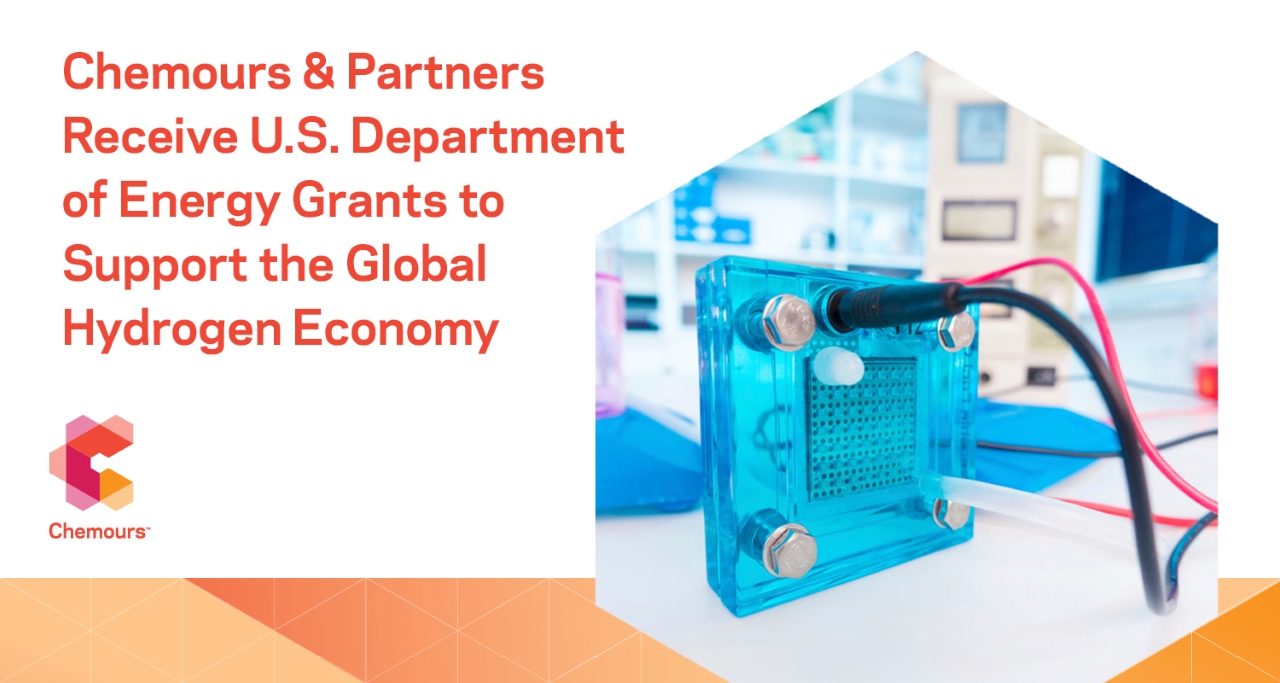Chemours and Partners Selected for $60M in U.S. Department of Energy Grants To Support Continued Advancement of Global Hydrogen Economy
NORTHAMPTON, MA / ACCESSWIRE / March 21, 2024 / The Chemours Company
Two project grants will support development of next-generation membranes for PEM water electrolysis and developing a circularity infrastructure for clean hydrogen materials
Chemours, a global chemistry company, announced that the U.S. Department of Energy (DOE), under the Bipartisan Infrastructure Law, selected two of its applications for grants totaling
Chemours is the lead recipient on a project entitled "Durable, High-Performance Membranes for Proton Exchange Membrane Water Electrolysis", where the company will leverage its technical expertise to develop a low-resistance Nafion™ membrane that demonstrates high levels of durability in a PEM electrolyzer stack. The project's goals include creating products that can be manufactured cost-effectively at scale, a significant challenge the hydrogen industry faces today. Chemours was also named a project partner in H2CIRC, a new consortium dedicated to producing a blueprint for the hydrogen industry to efficiently and sustainably recover and recycle materials and components from fuel cells and electrolyzers.
"Chemours is committed to using the power of its chemistry to advance the clean energy transition and hydrogen economy. Selection by the U.S. Department of Energy for these grants furthers our leading role and builds on the public, private, and academic partnerships whose collaborative efforts support the global adoption of hydrogen as a clean energy source," said Stefanie Kopchick, Hydrogen Business Venture Leader at Chemours. "Our Nafion™ ion exchange membranes play a critical role in driving the hydrogen economy and helping to create a more sustainable future, and these funds will help to accelerate their further development as well as taking a proactive approach to building an infrastructure supporting circularity of fuel cells and electrolyzers."
The grants announced by the DOE under the Bipartisan Infrastructure Law are part of
"At Chemours, our advanced chemistry and technology are at the heart of the hydrogen economy and essential to producing and deploying clean hydrogen," said Gerardo Familiar, President of Advanced Performance Materials at Chemours. "We have a unique place in the hydrogen supply chain as the leading global supplier of ionomers and membranes for PEM electrolysis, the only domestic manufacturer of ion exchange materials, and a key project partner in the Appalachian Regional Clean Hydrogen Hub (ARCH2) under the U.S. DOE's Regional Clean Hydrogen Hub initiative. As such, we must look further into the future and take a responsible approach to building and maintaining this evolving industry. Enabling the circularity of the materials necessary to produce clean hydrogen well into the future will be essential to this effort and aligns with our longstanding sustainability values."
To learn more about the recent hydrogen funding selections and grants, visit the DOE's Hydrogen and Fuel Cell Technology Office.

View additional multimedia and more ESG storytelling from The Chemours Company on 3blmedia.com.
Contact Info:
Spokesperson: The Chemours Company
Website: https://www.3blmedia.com/profiles/chemours-company
Email: info@3blmedia.com
SOURCE: The Chemours Company
View the original press release on accesswire.com







